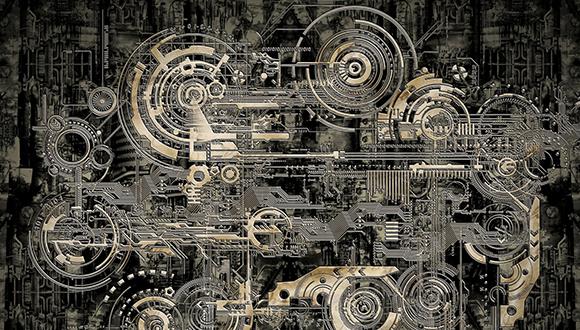School of Mechanical Engineering John E. Dolbow
School of Mechanical Engineering Seminar
Wednesday, October 17, 2018 at 14:00
Wolfson Building of Mechanical Engineering, Room 206
Models and Simulations of the Surfactant-Driven
Fracture of Particle Rafts
John E. Dolbow
Professor of Civil and Environmental Engineering,
Mechanical Engineering and Materials Science,
and Mathematics
Duke University
When a densely packed monolayer of hydrophobic particles is placed on a uid surface
the particles interact through capillary bridges, leading to the formation of a particle raft or
\praft" for short. Densely packed monolayers exhibit a two-dimensional elastic response, and
they are capable of supporting both tension and compression. The introduction of a controlled
amount of surfactant generates a surface tension gradient, producing Marangoni forces and
causing the surfactant to spread, fracturing the monolayer. These systems are of interest to
materials scientists and engineers because they provide an idealized setting for investigating the
interplay between uid ow and fracture. Previous studies of the surfactant-induced fracture
of prafts have examined the role of viscosity and the initial packing fraction on the temporal
and spatial evolution of the fractures. The potentially important role of di_erences in surface
tension between the surfactant and the underlying uid has not been explored.
This seminar will describe a new continuum-based model and simulations that account for
the interplay between the pressure exerted by a spreading surfactant and the elastic response
of the praft, including the fracture resistance. This is e_ected through the use of a surfactant
damage _eld that serves as both an indicator function for the surfactant concentration, as well
as the damage to the monolayer. Stochastic aspects of the particle packing are incorporated into
the model through a continuum mapping approach. The model gives rise to a coupled system
of nonlinear partial di_erential equations, with an irreversibility constraint. We recast the
model in variational form and discretize the system with an adaptive _nite element method. A
comparison between model-based simulations and existing experimental observations indicates
a qualitative match in both the fracture patterns and temporal scaling of the fracture process.
Based on the model, we determine a dimensionless parameter that characterizes the ratio
between this driving force and the fracture resistance of the praft. Interestingly, while our
results indicate that the stochastic aspects of the packing are important to the fracture process,
we _nd that regimes of fracture are largely governed by di_erences in surface tension. Finally,
we support our _ndings with newly designed experiments that validate the model and con_rm
the trends inferred from the simulations.


